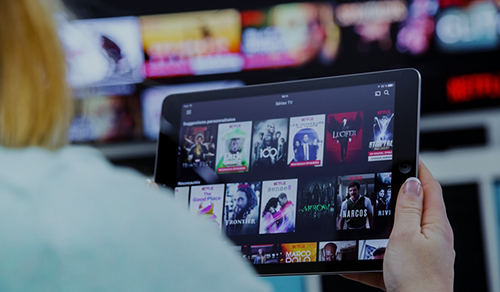14 Patterns of successful business model
The ability of people to innovate never ceases to amaze us, companies are continuously developing innovative products. Despite their innovations,...
By Role
By Industry
By Target Customer
What We Offer
We drive business growth by improving operational efficiency through process optimization, smart automation, and cost control. Our approach boosts productivity, reduces expenses, and increases profitability with scalable, sustainable solutions
Customer Experience
We design memorable, customer-centered experiences that drive loyalty, enhance support, and optimize every stage of the journey. From maturity frameworks and experience maps to loyalty programs, service design, and feedback analysis, we help brands deeply connect with users and grow sustainably.
Marketing & Sales
We drive marketing and sales strategies that combine technology, creativity, and analytics to accelerate growth. From value proposition design and AI-driven automation to inbound, ABM, and sales enablement strategies, we help businesses attract, convert, and retain customers effectively and profitably.
Pricing & Revenue
We optimize pricing and revenue through data-driven strategies and integrated planning. From profitability modeling and margin analysis to demand management and sales forecasting, we help maximize financial performance and business competitiveness.
Digital Transformation
We accelerate digital transformation by aligning strategy, processes and technology. From operating model definition and intelligent automation to CRM implementation, artificial intelligence and digital channels, we help organizations adapt, scale and lead in changing and competitive environments.
Operational Efficiency
We enhance operational efficiency through process optimization, intelligent automation, and cost control. From cost reduction strategies and process redesign to RPA and value analysis, we help businesses boost productivity, agility, and sustainable profitability.
Customer Experience
Marketing & Sales
Pricing & Revenue
Digital Transformation
Operational Efficiency
People's ability to innovate never ceases to amaze us as many companies develop excellent and sophisticated products. However, companies often lose their competitive advantage, why? Think of companies that dominated their industries and today struggle to maintain themselves. Some cases such as Nokia, Kodak, American Airlines, Motorola, among others, fell asleep in the commodity of success and ultimately failed because they did not adjust their business models to the changing environment.
Today, the competitive success of a company depends on its ability to create innovative Business Models. Analyze the following success stories from innovation in your business model instead of an individual product:
Research by BCG and MIT in 2013, showed that innovation in the business model is key to the sustainable success of companies and that 60% of the companies that implement this innovation report increases in their income.
We collect common patterns in business models of various industries. The key premise is to understand the models and adapt them according to our business context. We advise the following:
Some patterns seem similar but if they are analyzed carefully, they have differences or are complements of the models they resemble, for example, the knife and blade with the lock-in.
Consider the business model patterns:
The P2P model consists of connecting more than one segment of equal clients; that is people with people or companies with companies. It is important that you consider a value proposition for each customer segment. In this model, the development of the channel is very important since the model is a meeting point between equals. Some examples: Airbnb, Uber, eBay, Kiva.
This model consists of offering a free version to a segment of customers that require the basic functionality of the product/service and a premium version to a segment that requires premium functionality. Relations with customers is a barter because the basic version is given free of charge hoping to generate other businesses, for example, propaganda, or that later on, the customer will upgrade to the premium version. Some examples are Spotify, LinkedIn, Skype, and online newspapers.
It's a typical model of interacting with customers and consists of "enclosing" customers in the business model. Using another provider is not possible unless the customer is willing to incur costs for the change. The "confinement" can be generated by physical, technological or legal mechanisms.
The long-tail model is based on the Pareto law or 80/20 rule where 20% of the products generate 80% of the sales. This model seeks to bring customers to the queue (that is, 80% of the products generated by 20% of sales) using recommendation systems. The model is widely used by electronic businesses and requires developing organizational skills such as Data Science. Some examples are Youtube, Itunes, Amazon.
The model consists of making a transactional sale by selling a base product (at cost) and generating recurring sales through consumables that are required for the operation of the base product. This model is recommended to use when there are sales of frequently used products or services. We recommend using the Lock-In model as a complement. Some examples of companies that use this model are P&G (Gillette), Apple (Itunes), Nestlé (Nespresso), Cannon, Pandora, Amazon (Kindle).
This model is useful when the customer makes a rational purchase. At the time of purchase, you are offered some extras to give in to your emotions and make impulsive purchases of extras. Typical examples are the purchase of vehicles and airline tickets.
The table below identifies the blocks of the Canvas that impact the different patterns of the most well-known and used business models that will undoubtedly support you in the task of innovating your business model. It is important to clarify that there are other patterns and that the list is updated.

In conclusion, the sustainable competitiveness of a company no longer relies solely on the quality of its products or services, but rather on its ability to transform and reinvent its business model. Success stories from companies like Apple, Netflix, and Amazon demonstrate that true innovation lies in how value is generated and delivered—not just in what is offered. Conversely, examples such as Kodak and Nokia remind us that clinging to past formulas can lead to irrelevance, regardless of how dominant a company once was.
The business model patterns analyzed in this article are not magic formulas, but they offer proven frameworks that can be creatively adapted to different business contexts. The value doesn’t lie in copying, but in reinterpreting. The challenge for any company is to observe its environment, recognize latent opportunities, and apply these models strategically, disruptively, and in alignment with its value proposition. Each pattern—from the Freemium model to the Razor and Blade—has different implications for customer relationships, cost structure, and revenue streams, and must be carefully analyzed before implementation.
Innovating a business model is not a one-time task, but a continuous exercise in reflection, adaptation, and anticipation. The business environment is changing rapidly, and those who lead change are those who understand that innovation is not just technological but strategic. Understanding business model patterns, analyzing their impact on the Canvas, and daring to combine them in a unique way is the first step toward building resilient, relevant, and sustainable companies.

The ability of people to innovate never ceases to amaze us, companies are continuously developing innovative products. Despite their innovations,...

In 2008, Alex Osterwalder developed a tool to facilitate the analysis, mapping, and visualization of a company's business models. The “Business...

“The greatest danger in times of turbulence is not the turbulence – it is to act with yesterday's logic.” – Peter Drucker